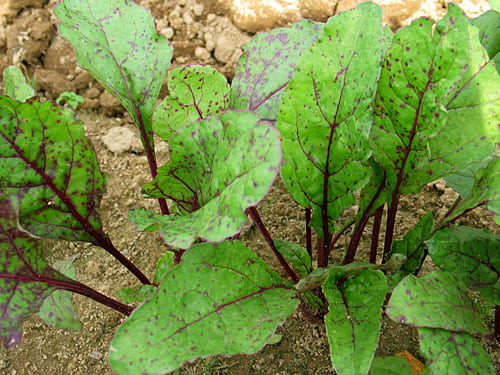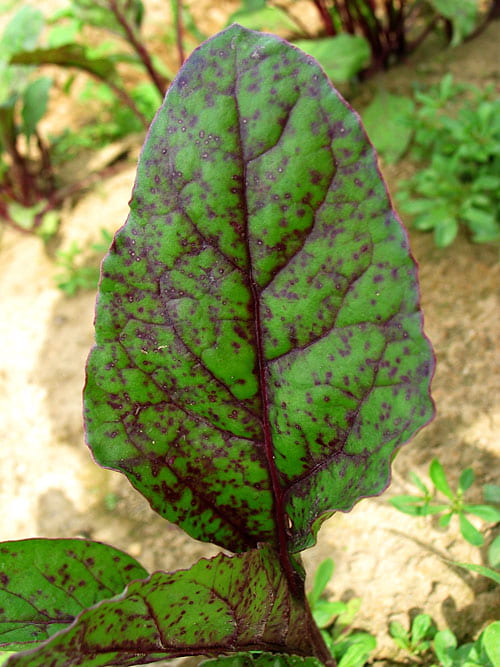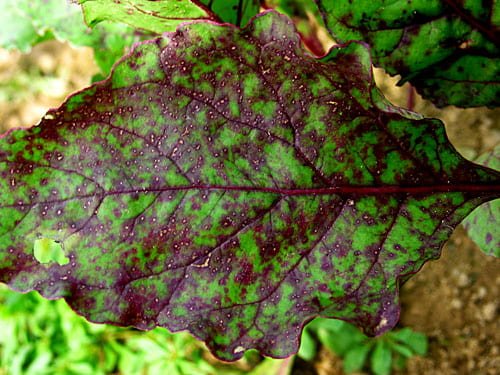Cercospora leaf spot is a common disease on Long Island. It has been described as the most destructive foliar disease of beet.
Disease development is favored by rain because pathogen spores are moved by wind and rain, which also provides leaf wetness for infection. In addition to frequent rain, other favorable conditions include relative humidity of at least 90% and temperature above 75 F. It is especially destructive in Swiss chard and beets grown for greens as affected leaves are unmarketable. The fungal pathogen also can infect spinach.
Symptoms are small, light tan to brown, round to sometimes angular spots whose border is often purple to red. Spots can be larger when less numerous. The center of spots observed on Long Island were lighter in color on the beets than the Swiss chard, and only the beets had the distinctive border. Spots were so numerous on some young Swiss chard leaves that they had coalesced and caused distortion.
Sources of the pathogen include contaminated seed, infested debris from previous crops and the related Chenopodium weeds that are also susceptible. The pathogen produces specialized survival structures (sclerotia) in infected leaves that enable it to survive in soil up to 2 years. Thus it is important to know where Cercospora leaf spot occurs to plan rotations.
Note that a different pathogen causes Cercospora leaf spot in carrot, parsley, celeriac, celery, dill and fennel.
Managing Cercospora leaf spot. Use clean seed, select resistant varieties, rotate where beets are planted, manage related Chenopodium weeds, apply fungicides, and incorporate crop debris as soon as possible after harvest. Conventional fungicides to alternate among include strobilurins (FRAC Code 11) Quadris and Cabrio, and DMI fungicides (3) PropiMax and Tilt. DoubleNickel is an organic biopesticide that has been documented effective in several evaluations, including in upstate NY; it was applied with the copper fungicide Cueva.
Please Note: Fungicides mentioned are for use in commercial production, not gardens. The specific directions on pesticide labels must be adhered to — they supersede these recommendations if there is a conflict. Any reference to commercial products, trade or brand names, is for information only; no endorsement is intended. For up-to-date information on labeled conventional fungicides see Cornell Integrated Crop and Pest Management Guidelines for Commercial Vegetable Production and biopesticides see the Biopesticides website.
Cercospora leaf spot of beet

Cercospora leaf spot of Swiss chard











